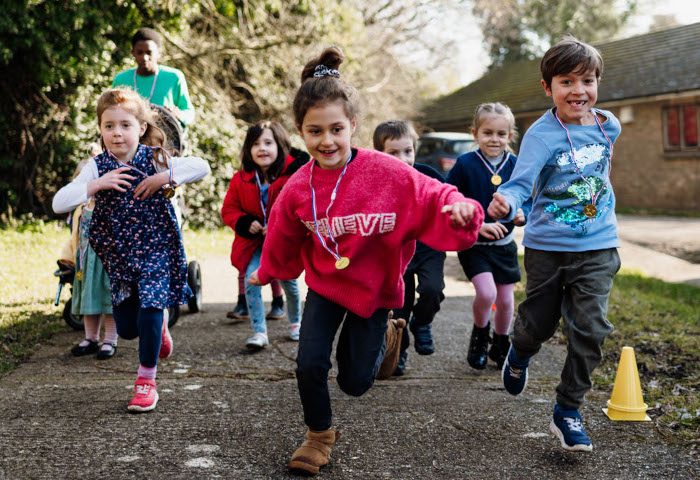Vicki Smith, Executive Director of Services at Growing Hope, shares some insights about the impact of ADHD in children and young people, and how to support them within church communities.
What is ADHD?
Attention-Deficit Hyperactivity Disorder (ADHD) is a common behavioural disorder, estimated to affect around 3-5% of children (NICE Clinical Guideline 87). People with ADHD show a persistent pattern of inattention and/or hyperactivity-impulsivity that interferes with day-to-day functioning and/or development (ADHD UK). Many children and young people will fall into both categories though some may struggle with concentrating and focusing (inattention) but do not show hyperactive or impulsive behaviour. This can be known as Attention Deficit Disorder (ADD) which sometimes goes unnoticed as the symptoms may be more subtle e.g. it can appear like disengaging from the wider environment. We know ADHD is more commonly diagnosed in boys, as girls may display less disruptive behaviour, making the condition harder to diagnose.
In everyday life or within your church community, you might notice children and young people with ADHD or ADD display some of these common characteristics: Lack of impulse control; Appearing forgetful or losing things; Challenges with turn-taking; Difficulty in listening, following directions and interrupting; A tendency to want to break away from a group or disengage; Fidgeting/squirming or finding it hard to stay still for periods of time; Excessive talking or physical movement; Little or no sense of danger.

The impact in church
Children with ADHD might be labelled as disruptive, noisy or misbehaving where there is lack of awareness around their specific needs and reasons behind their behaviour. Families we work with share how isolating it can be having a child with additional needs and the judgement they feel when out in public. Families might stop going out and joining in with community life, fearing that their child may present challenging behaviour that is hard to manage. There can be huge shame and anxiety attached to this.
At Growing Hope we aim to bring hope to children, hope to families and share hope in Jesus. We believe every person has unique value and we champion churches to provide places of welcome, where everyone can be seen, heard and able to belong and join in, especially those with additional needs like ADHD.
In the Bible, we see Jesus modelling for us what it looks like to reach out to those on the outskirts of communities, those who might have been judged or looked down on because of who they were. Because of his profession as a tax-collector, Zacchaeus was despised by Jews at the time, ostracised and considered an outsider. Yet Jesus reaches out to him and reminds people that ‘the Son of Man came to seek out and to save the lost’ (Luke 19:10). Jesus included those viewed as different and loved and welcomed them with open arms. If we are called to be like Jesus in our churches, what might it look like for us to consider and include children and young people with ADHD in our communities?
What could this welcome look like in our churches?
-
Just say hi
A friendly hello can help a family coming to church with a child with ADHD know that they are seen, welcomed and safe.
-
Getting to know you
Give families a way to share more about their child. Consider asking them to fill out a ‘Getting to know you’ form – find out what their child likes or doesn’t like and what helps them to engage and feel safe and supported in new places. Try these templates.
-
Using visuals
Many children with ADHD will learn and engage more effectively if visuals are used to communicate rather than lots of words. Roots provide a visual timetable to help manage transitions and expectations and Roots weekly resources include illustrations, images and crafts.
-
Movement matters
We know that those with ADHD often struggle with their proprioception sense – the sense that tells us where our body is in space. It might mean they appear to struggle with coordination or don’t know their own strength. Simple movement incorporated into fun games and activities which put pressure through the joints can help children with ADHD to feel more regulated and able to take part at church. Try using these: giving yourself a giant hug, walking on all fours or bouncing as part of a game or activity.
-
One simple sentence
Keeping our language simple and clear can really help those with ADHD to understand and process instructions more easily. You can top and tail an instruction with one simple sentence that sums up what you want to communicate.
-
Multisensory worship
Using our other senses like sight, smell and touch can help make children’s and youth groups more interactive, fun and engaging for those with ADHD. Roots sessions include ideas for exploring a multisensory approach to worship. Use these ideas to set up different activities for children to choose from.
Find out more
Growing Hope provides free therapy for children and young people with additional needs through clinics set up in partnership with churches. Live on 21 April 2025: look out for the Roots for Churches podcast with Growing Hope’s Dr Naomi Fox.